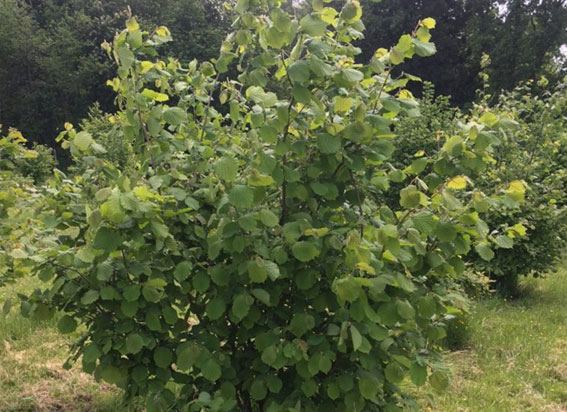NEWS
Prof. Paul Thomas (our Managing Director) has appeared on several TV programmes, radio shows and in many written articles. Specific areas of expertise include the biology, cultivation, hunting and cooking methods of the wide range of truffle species. If you would like an interview or require information for an article then please use our contact form and we would be very happy to help.
Below, our most recent news articles are displayed and our back-catalogue is open for browsing.
August 5, 2022
...in truffle literature, it is often claimed that truffle mycorrhiza can tolerate submersion for '14 days and no more' but with flood events increasing in frequency, we thought we'd put this to the test. As part of the experiment, saplings with truffle mycorrhiza were flooded from 7 to 65 days and full results have now been published.
February 15, 2022
...in truffle literature, it is often claimed that truffle mycorrhiza can tolerate submersion for '14 days and no more' but with flood events increasing in frequency, we thought we'd put this to the test. As part of the experiment, saplings with truffle mycorrhiza were flooded from 7 to 65 days and full results have now been published.
January 13, 2022
The summer or burgundy, black truffle, one of the world’s most expensive ingredients, has been successfully cultivated in Ireland, making history after 10 years of waiting.
February 19, 2021
How can I grow white truffles or Tuber magnatum? Can I farm white truffles? Can I grow white truffles in the UK? These are some of the most common questions we’ve been asked over the years and the response has always been that the technology just isn't there yet. Many years ago, we developed a system that resulted in well colonised trees with T. magnatum, but we had never offered these for sale as there are still so many unknowns about its cultivation. Consequently, there was widespread excitement this week when it was reported by a French team that white truffles had been produced from inoculated trees and in just 4.5 years! We thought it would be useful to provide a brief synopsis of this report and the current state of the technology to help would-be cultivators.
August 5, 2022
...in truffle literature, it is often claimed that truffle mycorrhiza can tolerate submersion for '14 days and no more' but with flood events increasing in frequency, we thought we'd put this to the test. As part of the experiment, saplings with truffle mycorrhiza were flooded from 7 to 65 days and full results have now been published.
February 15, 2022
...in truffle literature, it is often claimed that truffle mycorrhiza can tolerate submersion for '14 days and no more' but with flood events increasing in frequency, we thought we'd put this to the test. As part of the experiment, saplings with truffle mycorrhiza were flooded from 7 to 65 days and full results have now been published.
January 13, 2022
The summer or burgundy, black truffle, one of the world’s most expensive ingredients, has been successfully cultivated in Ireland, making history after 10 years of waiting.
February 19, 2021
How can I grow white truffles or Tuber magnatum? Can I farm white truffles? Can I grow white truffles in the UK? These are some of the most common questions we’ve been asked over the years and the response has always been that the technology just isn't there yet. Many years ago, we developed a system that resulted in well colonised trees with T. magnatum, but we had never offered these for sale as there are still so many unknowns about its cultivation. Consequently, there was widespread excitement this week when it was reported by a French team that white truffles had been produced from inoculated trees and in just 4.5 years! We thought it would be useful to provide a brief synopsis of this report and the current state of the technology to help would-be cultivators.




